
Lot 70

LATE GEORGE II STYLE MAHOGANY SERPENTINE COMMODE AFTER A DESIGN BY THOMAS CHIPPENDALE
MID 19TH CENTURY
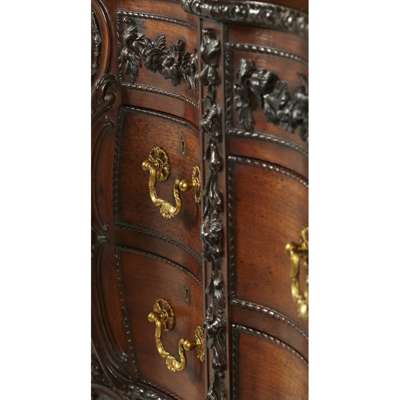
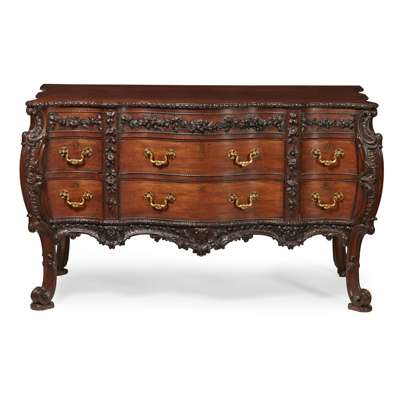

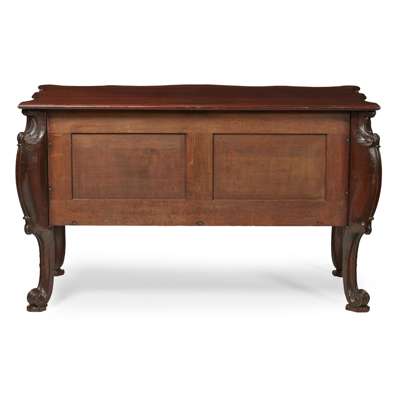

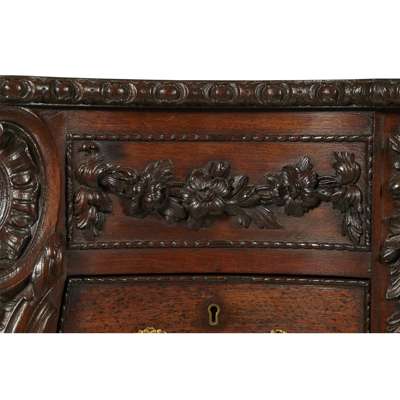
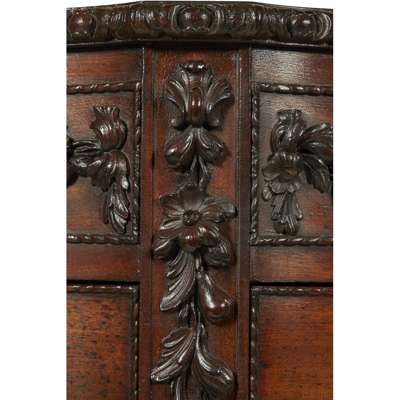
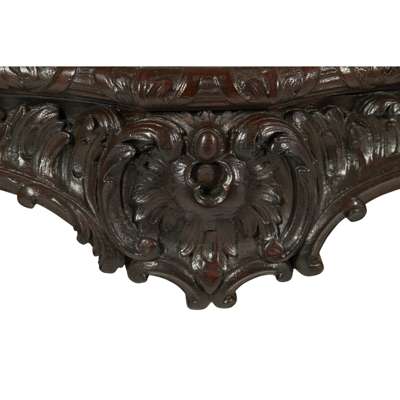
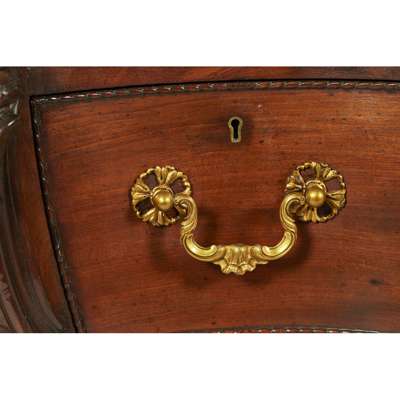
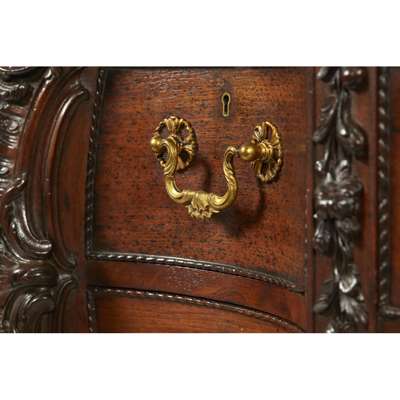
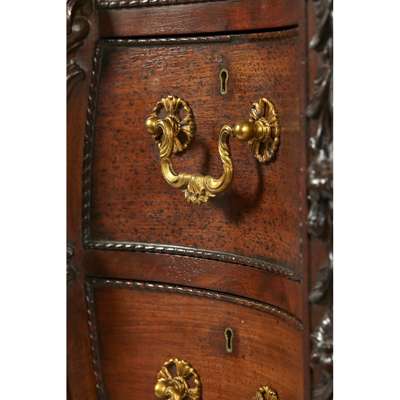
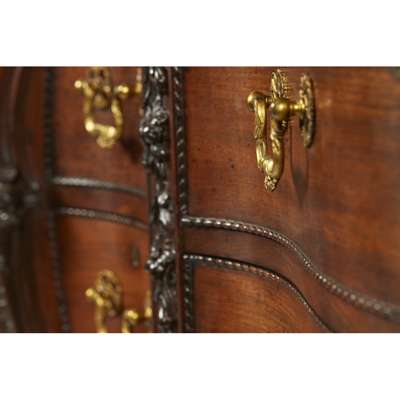
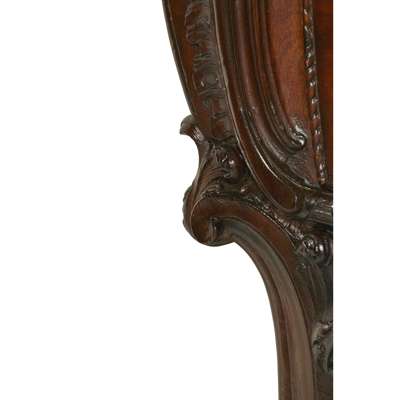















Auction: 14 November 2018 at 10:00 GMT
Description
in the French taste, the serpentine top with an egg and dart edge above a frieze carved in relief with fruiting swags, above a central pair of drawers flanked by banks of short drawers, all with rope twist borders and ormolu handles; flanked and divided by trailing flower garland pilasters, flanked by C scroll and rocaille carved angles, above a rocaille and C scroll carved apron, raised on C scroll moulded legs ending in scrolled toes on shaped pads, the locks stamped Cope & Collinson
Dimensions
136cm wide, 82cm high, 66cm deep
Footnote
Note: Thomas Chippendale's Gentleman and Cabinet-Maker's Director, published in three editions in 1754, 1755 and 1762, included designs for an important group of furniture referred to as 'Commode tables' or 'French commodes'. The first edition illustrated designs for six examples, which was subsequently expanded to fourteen for the edition of 1762. These are Chippendale's interpretations of Louis XV furniture of the period, incorporating bombé forms with rich ornamental carving to replace the ormolu mounts favoured by the French.
Plate XLIV in the 1754 and 1755 editions (later Plate LXV in the revised 1762 edition) illustrates a 'French Commode Table' which is the basis for a celebrated commode made in the 1750s for Captain Townsend of Raynham Hall, Norfolk, now in the collection of the Philadelphia Museum of Art. While no firm evidence has been uncovered to link the commode to the Chippendale workshop, there was a strong family tradition that Chippendale supplied furniture to the house and other members of the Townsend family. The Raynham Hall commode differs slightly from the Chippendale design, mainly in the serpentine outline of the top rather than a straight breakfront as shown in plate XLIV, and the introduction of a carved fruiting swag frieze and perpendiculars separating the drawer blocks.
The present lot, a near exact copy of the Raynham Hall commode, was made in the 19th century when there was renewed interest in Chippendale's furniture and designs. The popularity of mid-18th century design saw the term 'Chippendale' used to describe any English Rococo furniture inspired by the Director. Possibly a centennial piece made to mark the hundredth anniversary of the first edtion of the Director, the present commode could only have been made by someone familiar with the Raynham Hall commode since it so closely resembles it, most notably in the differences from Chippendale's original design.



























